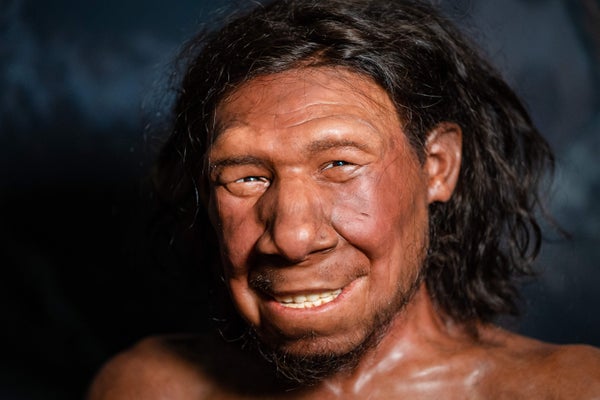October 11, 2024
4 min read
Humanity’s Origins Paint Our Ancestors as Lovers, Not Fighters
Fossil and gene discoveries paint an ever-more-intertwined history of humans combining with vanished species like Neandertals
The reconstructed face of Krijn, the oldest Neanderthal found in the Netherlands, displayed at the National Museum of Antiquities in Leiden on September 6, 2021.
Bart Maat/ANP/AFP via Getty Images
At the heart of scientific questions about the origins of humanity lie questions of human nature. Are Homo sapiens intrinsically lovers or fighters, predators or prey, lucky survivors or inevitable conquerors?
The friendlier answers to those queries keep coming, seen in a spate of genetic findings and some recent fossil discoveries. They also underline how tough life was for our prehistoric ancestors. Despite the eight billion people on Earth today, and counting, just surviving was winning for most of humanity’s history.
Not everyone did. Only 200,000 years ago, our ancestors lived on a planet teeming with varied human relatives: Neandertals lived in Europe and the Middle East. Denisovans, known today only from bone fragments, teeth and DNA, dwelled across Asia and perhaps even in the Pacific. “Hobbits,” or Homo floresiensis, a diminutive species, lived in Indonesia, as another short-statured species, called Homo luzonensis, did in the Philippines. Even Homo erectus, the grandparent of early human species, was still running around as recently as 112,000 years ago.
On supporting science journalism
If you’re enjoying this article, consider supporting our award-winning journalism by subscribing. By purchasing a subscription you are helping to ensure the future of impactful stories about the discoveries and ideas shaping our world today.
Now they are all gone. Except in our genes. Denisovans interbred with Neandertals, and both mated with modern humans. Genes from “an unknown hominin in Africa” also mark modern humans’ genomes. The initial…
Read the full article here







